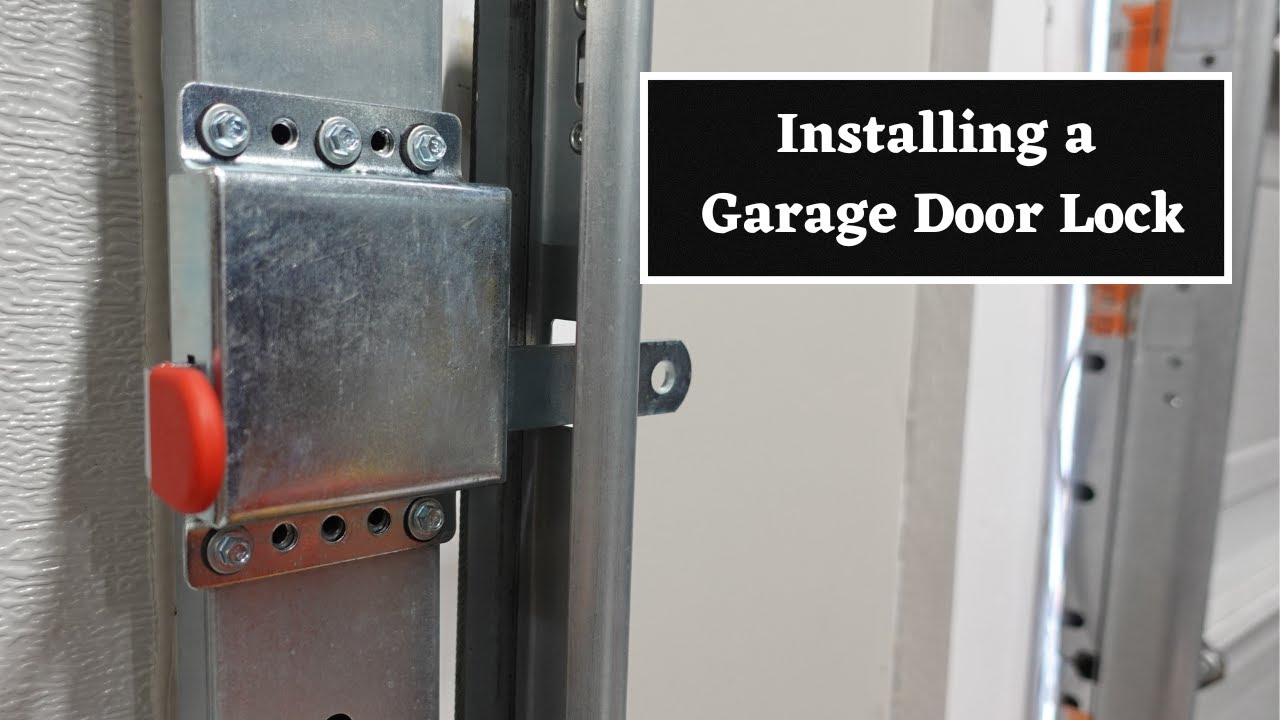
Garage Doors and Parts – Power of a Deadbolt Lock lies in its mechanical strength and simplicity. Unlike standard electronic garage door openers, a deadbolt lock does not rely on power or wireless signals. Instead, it provides a physical barrier that resists forced entry. Many homeowners overlook the garage as a vulnerable point of access, even though it often connects directly to the house. Thieves can easily exploit weak locking systems or use universal remotes to gain access. By installing a deadbolt lock, families add a dependable line of defense that requires no software or electricity to function. The mechanical engagement of the bolt into a reinforced frame significantly increases resistance to prying or lifting. In addition to standard openers, this lock gives homeowners peace of mind. Whether during vacations or overnight hours, the added layer of security creates a vault-like protection for tools, vehicles, and entry to the home itself.
Many garage doors come with basic latch systems that provide minimal resistance to tampering. These latches can be bent or bypassed with simple tools. In contrast, a deadbolt lock slides directly into a heavy-duty strike plate, creating a stronger anchor point. The difference in durability is noticeable during stress tests. Deadbolt locks use thicker steel components and reinforced mounting plates. Their design makes it more difficult for intruders to apply force effectively. Homeowners who use deadbolts on front doors understand the value of mechanical resistance. The same logic applies to garage doors. A well-installed deadbolt will not disengage with vibration or accidental pressure, making it ideal for high-traffic or high-risk environments. While electronic systems can be jammed or hacked, a manual deadbolt keeps functioning reliably. By upgrading from a latch to a deadbolt, homeowners raise the overall integrity of their property’s perimeter defenses.
“Read about: Custom Style, Curb Appeal: Garage Door Design Gets a Bold Upgrade”
Adding a deadbolt lock to a garage door is easier than most people expect. Manufacturers design these locks to work with common sectional and roller doors. Many kits include installation templates and require only basic tools. The process involves marking the correct height, drilling into the side rail, and securing the bolt mechanism in place. Alignment between the bolt and the catch is critical to ensure proper engagement. Some modern locks integrate with smart home systems, combining mechanical strength with remote control features. However, even standalone deadbolts deliver impressive security. Professional installers can complete the task within an hour, though DIY users often report success with careful measurement and guidance. This compatibility with various door materials and systems makes deadbolt locks a practical choice. Regardless of the garage door’s age or type, a reliable deadbolt can be added to boost resistance against intrusion attempts without changing the door entirely.
Garages contain more than cars. They often store valuable tools, bicycles, seasonal equipment, and entry access to the rest of the house. A breach through the garage can result in large losses or personal risk. Homeowners frequently underestimate this space, especially if they rely solely on electric openers. Yet power outages, software glitches, or human error can disable those systems. A deadbolt lock provides mechanical backup that functions independently. It also deters casual criminals who prefer quick access. When visible from outside or when reinforced with signage, deadbolts can send a message that the home is well protected. Insurance providers may also offer reduced premiums for homes with added security measures. By focusing on this often-ignored entry point, families improve safety without major renovation. Simple investments in deadbolt locks contribute to long-term peace of mind, especially for properties in suburban or rural locations where garages are primary access zones.
“Read more: Gaza’s Silent Emergency: Malnutrition Crisis Hits Thousands of Children”
While a deadbolt lock adds significant strength to a garage door, combining it with other security features creates an even more formidable system. Motion sensor lighting around the garage alerts homeowners to any suspicious activity. Interior alarms connected to door movements provide instant notifications. Surveillance cameras aimed at the garage entrance act as both deterrents and evidence gatherers. Together, these layers form a comprehensive defense. Reinforced door panels, anti-lift devices, and smart locking systems further enhance the effect. Deadbolt locks serve as the anchor in this multi-layered approach, providing the mechanical resistance needed to slow or stop intrusions. Their effectiveness grows when paired with awareness and routine security checks. Maintaining visible and well-lit entry points discourages tampering. When all these systems work in tandem, the garage becomes one of the most secure areas of the home. Instead of a weak link, it transforms into a stronghold against both opportunistic and targeted break-ins.
This website uses cookies.